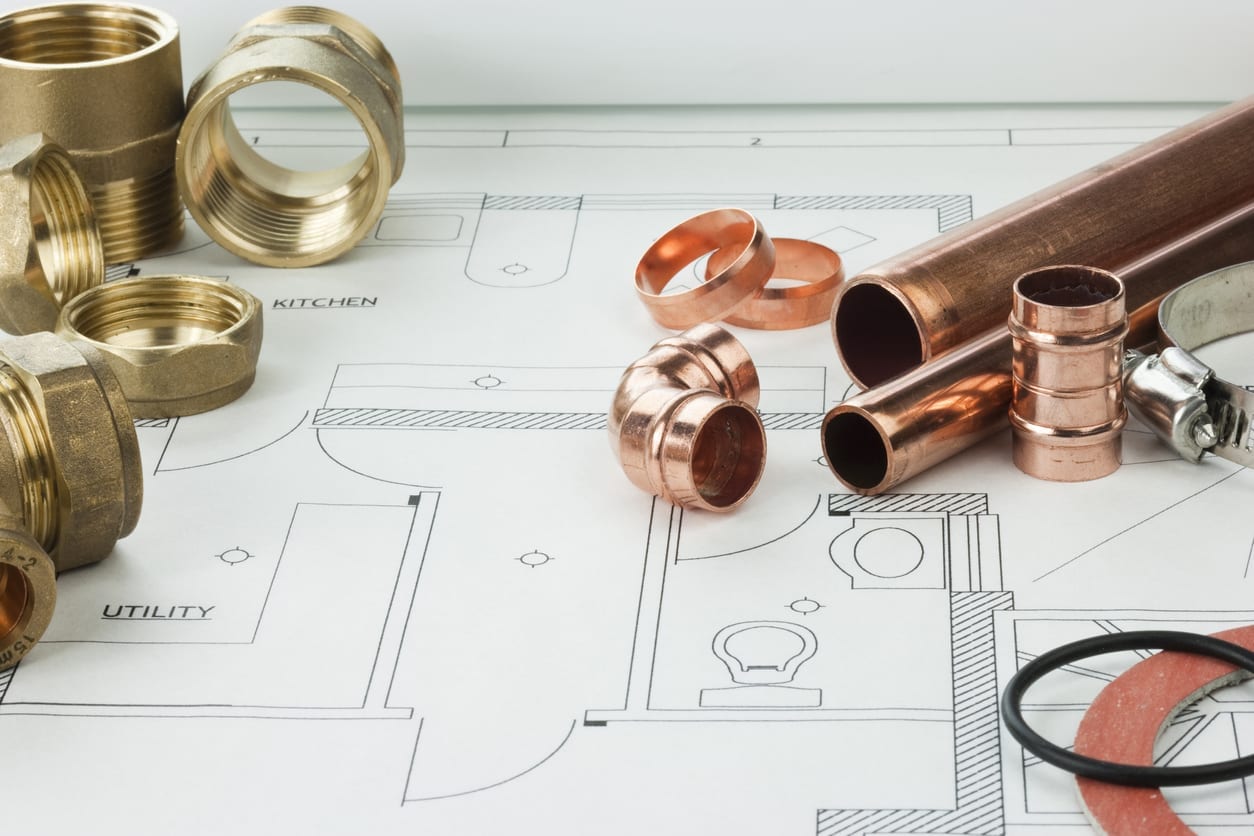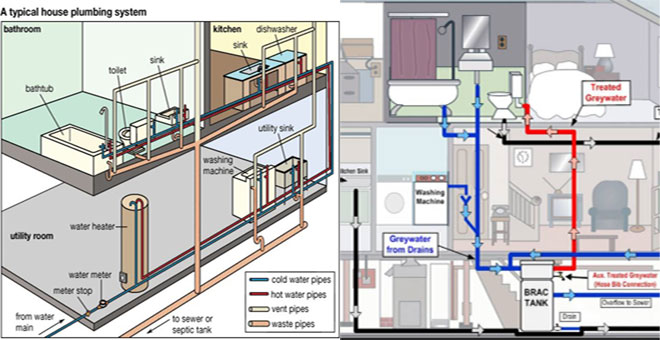How Your Property's Plumbing System Works: Structure
How Your Property's Plumbing System Works: Structure
Blog Article
What're your opinions on The Inner Workings of Your Home's Plumbing?

Recognizing exactly how your home's plumbing system functions is important for every home owner. From providing clean water for alcohol consumption, food preparation, and bathing to securely eliminating wastewater, a well-kept pipes system is important for your family's wellness and comfort. In this comprehensive guide, we'll explore the detailed network that comprises your home's plumbing and deal tips on upkeep, upgrades, and taking care of common issues.
Intro
Your home's pipes system is more than just a network of pipes; it's a complex system that guarantees you have accessibility to clean water and efficient wastewater elimination. Recognizing its elements and how they interact can aid you avoid costly fixings and make sure whatever runs efficiently.
Fundamental Parts of a Plumbing System
Pipes and Tubes
At the heart of your plumbing system are the pipes and tubes that carry water throughout your home. These can be made of various products such as copper, PVC, or PEX, each with its advantages in terms of longevity and cost-effectiveness.
Fixtures: Sinks, Toilets, Showers, and so on.
Fixtures like sinks, commodes, showers, and tubs are where water is used in your house. Comprehending how these components connect to the pipes system helps in detecting issues and planning upgrades.
Shutoffs and Shut-off Points
Shutoffs control the circulation of water in your plumbing system. Shut-off shutoffs are essential throughout emergencies or when you require to make repair work, allowing you to separate parts of the system without disrupting water circulation to the entire home.
Water Supply System
Key Water Line
The main water line links your home to the municipal water system or a private well. It's where water enters your home and is dispersed to numerous fixtures.
Water Meter and Stress Regulatory Authority
The water meter steps your water use, while a pressure regulatory authority ensures that water streams at a secure pressure throughout your home's pipes system, avoiding damages to pipes and fixtures.
Cold Water vs. Warm water Lines
Understanding the difference in between cold water lines, which supply water straight from the major, and hot water lines, which bring warmed water from the water heater, assists in repairing and planning for upgrades.
Drain System
Drain Pipes Pipes and Traps
Drain pipes lug wastewater away from sinks, showers, and bathrooms to the sewage system or septic tank. Catches prevent sewer gases from entering your home and also trap debris that might trigger blockages.
Air flow Pipelines
Ventilation pipes allow air into the drain system, avoiding suction that might slow down water drainage and create catches to vacant. Correct air flow is crucial for keeping the honesty of your pipes system.
Relevance of Appropriate Drain
Making certain correct drainage avoids backups and water damages. Consistently cleaning drains and preserving catches can stop pricey fixings and expand the life of your plumbing system.
Water Heating System
Sorts Of Water Heaters
Water heaters can be tankless or traditional tank-style. Tankless heaters heat water on demand, while tanks store heated water for immediate usage.
Just How Water Heaters Attach to the Pipes System
Recognizing just how hot water heater attach to both the cold water supply and warm water circulation lines aids in detecting concerns like not enough warm water or leakages.
Upkeep Tips for Water Heaters
On a regular basis purging your hot water heater to eliminate sediment, inspecting the temperature settings, and inspecting for leaks can extend its lifespan and enhance energy performance.
Typical Plumbing Issues
Leakages and Their Causes
Leaks can take place because of aging pipelines, loose installations, or high water stress. Dealing with leakages immediately avoids water damages and mold and mildew growth.
Obstructions and Obstructions
Clogs in drains pipes and toilets are usually triggered by flushing non-flushable things or a buildup of oil and hair. Utilizing drainpipe displays and being mindful of what decreases your drains can avoid clogs.
Indicators of Pipes Problems to Watch For
Low tide pressure, slow drains pipes, foul odors, or uncommonly high water bills are indicators of prospective plumbing problems that must be dealt with promptly.
Pipes Maintenance Tips
Routine Evaluations and Checks
Set up yearly plumbing examinations to catch issues early. Try to find signs of leaks, deterioration, or mineral buildup in taps and showerheads.
DIY Maintenance Tasks
Basic jobs like cleansing faucet aerators, looking for toilet leaks making use of dye tablet computers, or shielding exposed pipelines in cool climates can stop significant plumbing problems.
When to Call a Specialist Plumbing
Know when a pipes concern calls for specialist competence. Attempting complicated repairs without appropriate knowledge can lead to even more damages and higher fixing costs.
Updating Your Plumbing System
Factors for Updating
Upgrading to water-efficient components or replacing old pipelines can boost water high quality, lower water bills, and boost the worth of your home.
Modern Plumbing Technologies and Their Advantages
Explore innovations like clever leak detectors, water-saving bathrooms, and energy-efficient hot water heater that can save cash and lower environmental influence.
Price Considerations and ROI
Compute the upfront costs versus long-lasting financial savings when thinking about pipes upgrades. Several upgrades pay for themselves with lowered utility expenses and less fixings.
Environmental Impact and Conservation
Water-Saving Fixtures and Appliances
Setting up low-flow faucets, showerheads, and bathrooms can substantially decrease water usage without giving up efficiency.
Tips for Reducing Water Use
Straightforward behaviors like dealing with leakages immediately, taking shorter showers, and running complete lots of washing and recipes can preserve water and reduced your energy expenses.
Eco-Friendly Pipes Options
Think about lasting plumbing materials like bamboo for flooring, which is durable and environment-friendly, or recycled glass for counter tops.
Emergency Readiness
Actions to Take Throughout a Pipes Emergency situation
Know where your shut-off shutoffs lie and how to turn off the supply of water in case of a burst pipe or major leak.
Significance of Having Emergency Situation Get In Touches With Helpful
Maintain call details for neighborhood plumbing professionals or emergency situation solutions conveniently offered for fast action throughout a pipes dilemma.
DIY Emergency Fixes (When Appropriate).
Short-term repairs like utilizing duct tape to patch a leaking pipeline or positioning a pail under a leaking faucet can decrease damages until a professional plumbing professional shows up.
Conclusion.
Recognizing the composition of your home's plumbing system encourages you to preserve it efficiently, conserving time and money on repairs. By adhering to routine maintenance routines and staying educated concerning contemporary plumbing technologies, you can guarantee your plumbing system runs effectively for years to find.
Understanding Your Home Plumbing System: A Comprehensive Guide
Plumbing System: The Lifeline of Your Home
At its core, the plumbing system is designed to perform two primary functions: bring fresh water into your home and remove wastewater. The system is a network of pipes, fixtures, and other components that transport water and sewage. Residential plumbing systems include potable water supply lines, drain-waste-vent (DWV) systems, and various plumbing fixtures that make water use in daily tasks possible.
Key Components:
Water Supply: This part of your plumbing system brings municipal water into your home, passing through the main water supply line. It s responsible for supplying all water needs, from drinking to bathing.
Drainage System: It carries waste and water away from your home to the sewer or septic system. This system includes all the piping within your home that leads to external sewage or septic systems.
Vent System: An essential yet often overlooked component, the vent system allows sewer gases to escape and lets air into the drainpipes, ensuring water and waste move correctly through the system.
Fixture: More Than Just Taps and Toilets
Plumbing fixtures are the most interactive parts of the plumbing system, including faucets, showers, toilets, and sinks. Each fixture is connected to the plumbing system and plays a role in either the delivery of freshwater or the disposal of waste and wastewater.
Types of Fixtures:
Faucets and Sinks: Used for washing hands, dishes, and other daily water needs.
Toilets: Dispose of human waste through the sewage system.
Bathtubs and Showers: Provide bathing facilities, requiring both hot and cold water supply.
Water Supply: The Source of Life
The water supply system is a critical component, ensuring that potable water is available throughout your home for various uses, including drinking, cooking, and cleaning. This system consists of pipes that distribute water to different parts of the house, controlled by valves to regulate the water flow.
Types of Plumbing: Materials and Methods
Various types of plumbing systems and materials are used in residential settings, each with its advantages and applications. From copper and PVC pipes for water supply to cast iron and ABS for drainage, the choice of materials can impact the longevity and efficiency of your plumbing system.
https://intownplumbingtx.com/articles/home-plumbing-system-guide/

Understanding Your Home Plumbing System: A Comprehensive Guide
Plumbing System: The Lifeline of Your Home
At its core, the plumbing system is designed to perform two primary functions: bring fresh water into your home and remove wastewater. The system is a network of pipes, fixtures, and other components that transport water and sewage. Residential plumbing systems include potable water supply lines, drain-waste-vent (DWV) systems, and various plumbing fixtures that make water use in daily tasks possible.
Key Components:
Water Supply: This part of your plumbing system brings municipal water into your home, passing through the main water supply line. It s responsible for supplying all water needs, from drinking to bathing.
Drainage System: It carries waste and water away from your home to the sewer or septic system. This system includes all the piping within your home that leads to external sewage or septic systems.
Vent System: An essential yet often overlooked component, the vent system allows sewer gases to escape and lets air into the drainpipes, ensuring water and waste move correctly through the system.
Fixture: More Than Just Taps and Toilets
Plumbing fixtures are the most interactive parts of the plumbing system, including faucets, showers, toilets, and sinks. Each fixture is connected to the plumbing system and plays a role in either the delivery of freshwater or the disposal of waste and wastewater.
Types of Fixtures:
Water Supply: The Source of Life
The water supply system is a critical component, ensuring that potable water is available throughout your home for various uses, including drinking, cooking, and cleaning. This system consists of pipes that distribute water to different parts of the house, controlled by valves to regulate the water flow.
Types of Plumbing: Materials and Methods
Various types of plumbing systems and materials are used in residential settings, each with its advantages and applications. From copper and PVC pipes for water supply to cast iron and ABS for drainage, the choice of materials can impact the longevity and efficiency of your plumbing system.
https://intownplumbingtx.com/articles/home-plumbing-system-guide/
Do you enjoy more info about Anatomy of a House: Understanding the Components? Make a short review further down. We'd be pleased to see your responses about this write-up. In hopes to see you back again in the near future. Sharing is nice. Who knows, you may be helping someone out. I take joy in your readership.
Phone Report this page